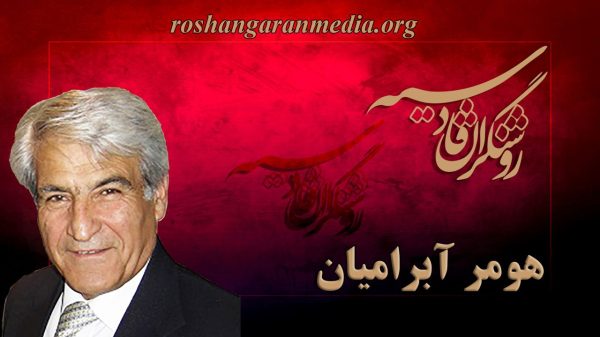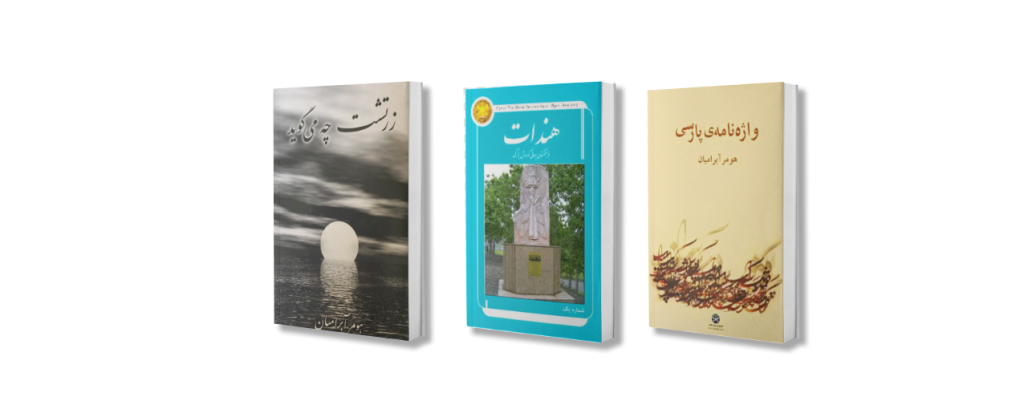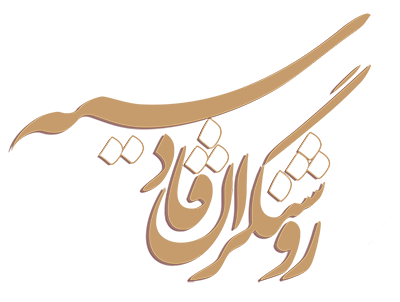
هومر آبرامیان در سال ۱۳۱۷ در یک خانواده آشوری در شهر زیبای همدان پا به هستی گذاشت. پس از پایان دوره آموزشی کار راهسازی را برگزید تا هم در آغوش طبیعت زنده باشد و هم شب هنگام به دور از غوغای شهر به پژوهش در ژرفای فرهنگ ایران بپردازد. او از همان نوجوانی جان بسته فرهنگ و ادب ایران زمین شد و به شاهنامهی فردوسی و گاتهای رزتشت دل بستگی ویژهای پیدا کرد.
هومر کار نوشتن را در نیمهی ره زندگی با نگاهی هستی شناسانه به نمادهای سه گانهی (سرآدمی، بال عقاب، و پیکر تنومند گاو) در تندیس با شکوه “گاو بالدار” آغاز کرد. کتابی که پیش از انقلاب اسلامی در تهران به چاپ رسید و در همان نخستین ماهها پس از انتشار نایاب و پس از انقلاب تجدید چاپ نشد. برگردان “تاریخ ادبیات آشوری” به زبان پارسی و “آشور از آغاز تا امروز” باز هم به زبان پارسی دو نوشتار کلانی بودند که گرفتار انقلاب اسلامی شده و در کنار بسیاری از دیگر نوشتهها از میان رفتند.
پس از روی کارآمدن حکومت اسلامی، زمانی که هنوز در ایران بود رشته نوشتارهایی با نام مستعار “هُرمُز رَسام” در هفتهنامه “گام” در استرالیا به چاپ رسانید. در سال ۱۹۸۷ وزارت اطلاعات رژیم اسلامی “هرمز رسام” را شناسایی و هومر آبرامیان پس از سه سال گریز و دربدری توانست با همکاری همان رسانه و چند سازمان سیاسی دیگر با پشت سرگذاشتن همهی داروندار خود به استرالیا پناهنده شود.
هومر در سال ۱۹۹۰ (بنیاد فرهنگ ایران) را در شهر سیدنی بنیاد گذاشت. آرمان این بنیاد پاسداری از ارزشهای فرهنگی و گرامی داشت پالایشهای ملی ایرانی است. در سال ۱۹۹۲ در گرامی داشت فردوسی و شاهنامه همایش بزرگی در دانشگاه نیوساوت ولز برگزار کرد، این همایش راهگشای یک رشته کارهای دیگر در استرالیا شد.
در سال ۱۹۹۴ جشنواره بزرگ فرهنگ ایران “مهرگان” را برگزار کرد، جشنوارهای که از سوی همهی فرزانگان میهمان “بزرگترین رخداد فرهنگی در برونمرز” نام گرفت. در این جشنواره که ده روز به درازا کشید سی و شش تن از نامدارترین استادان ایرانشناس از سراسر جهان به سیدنی فراخوانده شدند، تندیس “کوروش بزرگ” در همان جشنواره در پارک دهکدهی المپیک سیدنی برپاشد، سرود ملی ایران برای نخستین بار در آن جشنواره با همکاری ارکستر بزرگ “ویلوبی سیمفونی ارکسترا” و به رهبری یک بانوی ایرانی به نام لیندا صفاجو و با سدای ابی و چهل و تن آوازهخوانان گروه کُر در تالار بزرگ “اپراهاوس سیدنی” به اجرا درآمد.
هومر آبرامیان در سال ۱۹۹۸ دومین همایش بزرگ فرهنگ ایران را برپاکرد و ایران شناسانی را که نامهای بزرگ دارند از آمریکا و اروپا و هندوستان و ارمنستان و قفقاز و تاجیکستان به سیدنی فراخواند. این همایش یک هفته در دانشگاه سیدنی برپابود و دستآوردهای بسیار ارزشمندی از خود برجای گذاشت.
در امریکا رشته برنامهها و مناظرههای تلویزیونی از رسانههای گوناگون ایرانی از سال ۲۰۰۳ را به انجام رسانده و در کانادا کتاب “زرتشت چه میگوید؟” را در سال ۲۰۰۸ به چاپ رسانید.
هومر آبرامیان برای شناساندن فر و فرهنگ ایرانزمین تاکنون بیش از بیست و پنج بار به دور جهان سفر و در شهرهای گوناگون سخنرانی کرده و آرمان بزرگ او بنیادگذاری “دانشگاه جهانی کوروش بزرگ” است، دانشگاهی که بتواند از راه ماهوارههای تلویزیونی و رادیو و اینترنت، خوان دانش را در سراسر جهان فراروی جویندگان دانش بگستراند. آرمان والایی که برای دست یابی به آن همه دلباختگان فر و فرهنگ ایران زمین را به همازوری فرا میخواند.

Homer Abramian took his first steps in the city of beautiful Hamadan in 1938, in an Assyrian family. After completing his education, he chose the field of road construction to be in the embrace of nature and engage in deep research into the culture of Iran, away from the city’s hustle and bustle. From his youth, he immersed himself in the culture and literature of Iran, developing a special affection for Ferdowsi’s Shahnameh and the Gathas of Zarathustra.
Homer began his writing career halfway through his life, with a contemplative perspective on the symbolic trinity of human head, eagle wings, and the powerful body of a bull in the magnificent statue of the “Winged Bull.” A book he published in Tehran before the Islamic Revolution, which became rare shortly after its release and was not reprinted after the revolution. His translations of “The History of Assyrian Literature” and “Assyria from the Beginning to the Present” were also significant works in Persian that were lost alongside many other writings due to the Islamic Revolution.
After the rise of the Islamic regime, while he was still in Iran, he published a series of writings under the pseudonym “Hormoz Rassam” in the weekly magazine “Gam” in Australia. In 1987, the Ministry of Intelligence of the Islamic regime identified “Hormoz Rassam,” and after three years of escape and wandering, Homer Abramian managed to seek refuge in Australia with the help of the same media outlet and several other political organizations, leaving everything behind.
In 1990, Homer established the “Iranian Cultural Foundation” in Sydney. The foundation’s ideal was to safeguard the cultural values and refine the national refinements of Iran. In 1992, he organized a grand conference at the University of New South Wales to commemorate Ferdowsi and Shahnameh. This conference paved the way for various other activities in Australia.
In 1994, he organized the grand Iranian cultural festival “Mehregan,” which was hailed as the “largest cultural event abroad” by all intellectuals. During the ten-day festival, thirty-six prominent Iranian scholars from around the world were invited to Sydney. The statue of “Cyrus the Great” was unveiled at the festival in Olympic Village Park, Sydney. The Iranian national anthem was performed for the first time at that festival in the grand Sydney Opera House, in collaboration with the “Willoughby Symphony Orchestra,” led by an Iranian lady named Linda Saffadjoo, accompanied by forty singers from the chorus group “Kur.”
In 1998, Homer Abramian organized the second grand Iranian cultural conference and invited prominent Iranian scholars with great names from the United States, Europe, India, Armenia, the Caucasus, and Tajikistan to Sydney. The conference lasted for a week at the University of Sydney and left behind many valuable achievements.
In the United States, he has been involved in television programs and debates through various Iranian media outlets since 2003, and in Canada, he published the book “What Does Zoroaster Say?” in 2008.
Homer Abramian has traveled around the world more than twenty-five times to introduce the splendor and culture of Iran. He has delivered lectures in various cities, and his great aspiration is the establishment of the “World University of Cyrus the Great,” a university that can spread knowledge to seekers of knowledge across the globe through satellite television, radio, and the internet. This lofty aspiration calls upon all admirers of the splendor and culture of Iran to come together.
